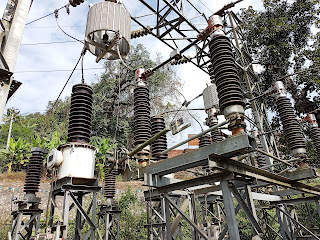Substation wave trap is an essential component of high voltage electrical systems that are used to protect the transmission lines and other electrical equipment from high frequency transients, such as lightning strikes and radio frequency interference (RFI). These devices help to ensure the safe and reliable operation of the power system by reducing the amount of unwanted noise and interference that can cause damage or disruption to the equipment.
substation wave trap
The substation wave trap is essentially a filter that allows low frequency power signals to pass through while blocking high frequency signals. It is designed to attenuate the high frequency components of the power signals, so that they are not able to propagate along the transmission lines and into other equipment in the system.
The wave trap typically consists of a series of inductors, capacitors and resistors that are arranged in a specific configuration to create a bandpass filter. The inductors are designed to provide high impedance to high frequency signals, while the capacitors are designed to provide low impedance to low frequency signals. The resistors are used to dampen the high frequency signals, so that they are not reflected back into the transmission line.
Operating principle of substation wave trap
The wave trap is typically installed at the boundary of the substation, where the transmission lines enter the substation. The device is designed to block high frequency signals from entering the substation, while allowing the low frequency power signals to pass through. The wave trap is usually connected between the transmission line and the substation equipment, such as transformers, circuit breakers, and switchgear.
Let's know this by equation, On high frequency signal frequency (f) will be high on wave trap.
Inductive reactance, XL = 2πfL where, L = inductance
As frequency is high, XL will also high and if frequency is low, XL will be low. It will prevent high frequency signal from power circuit.
On other hand, with high frequency signal capacitive impedance will be low.
Capacitive reactance, Xc = 1 / 2πfC where, C = capacitance
As frequency is high, Xc will also low and if frequency is low, Xc will be high. It will allow high frequency carrier signal from power circuit for communication.
Function of substation wave trap
One of the primary functions of the substation wave trap is to protect the substation equipment from damage caused by lightning strikes. When lightning strikes the transmission line, it can generate high frequency transients that can propagate along the line and into the substation. These transients can cause electrical arcing, insulation breakdown, and other types of damage to the equipment. The wave trap helps to prevent this damage by attenuating the high frequency components of the lightning strike, so that they do not propagate into the substation. The wave trap is designed to reflect the high frequency signals back along the transmission line, where they are dissipated harmlessly into the environment. Another important function of the substation wave trap is to protect the transmission lines and other equipment from radio frequency interference (RFI). RFI can be generated by a wide range of sources, including radio and television broadcast stations, cell phone towers, and other wireless communication systems. The wave trap helps to reduce the effects of RFI by blocking the high frequency signals that are associated with these sources. By filtering out the unwanted RFI, the wave trap helps to ensure that the power system operates with maximum efficiency and reliability.
Application of substation wave trap
Substation wave trap is available in a wide range of configurations and designs to suit different applications and operating conditions. They can be designed to handle different voltage levels, frequency ranges, and power ratings, depending on the specific needs of the power system. In addition to wave traps, there are other types of filters that can be used to protect power systems from high frequency transients and RFI. These include low pass filters, high pass filters, and band stop filters. Each of these filters is designed to attenuate specific frequency ranges of the power signal, depending on the needs of the system.
In conclusion, substation wave trap is an essential component of high voltage electrical systems that are used to protect the transmission lines and other equipment from high frequency transients and RFI. These devices help to ensure the safe and reliable operation of the power system by reducing the amount of unwanted noise and interference that can cause damage or disruption to the equipment. By filtering out the high frequency components of the power signal, wave traps help to prevent damage caused by lightning strikes, as well as reduce the effects of RFI. With a wide range of configurations and designs available, substation wave








No comments:
Post a Comment
----Please share your opinion with us-----